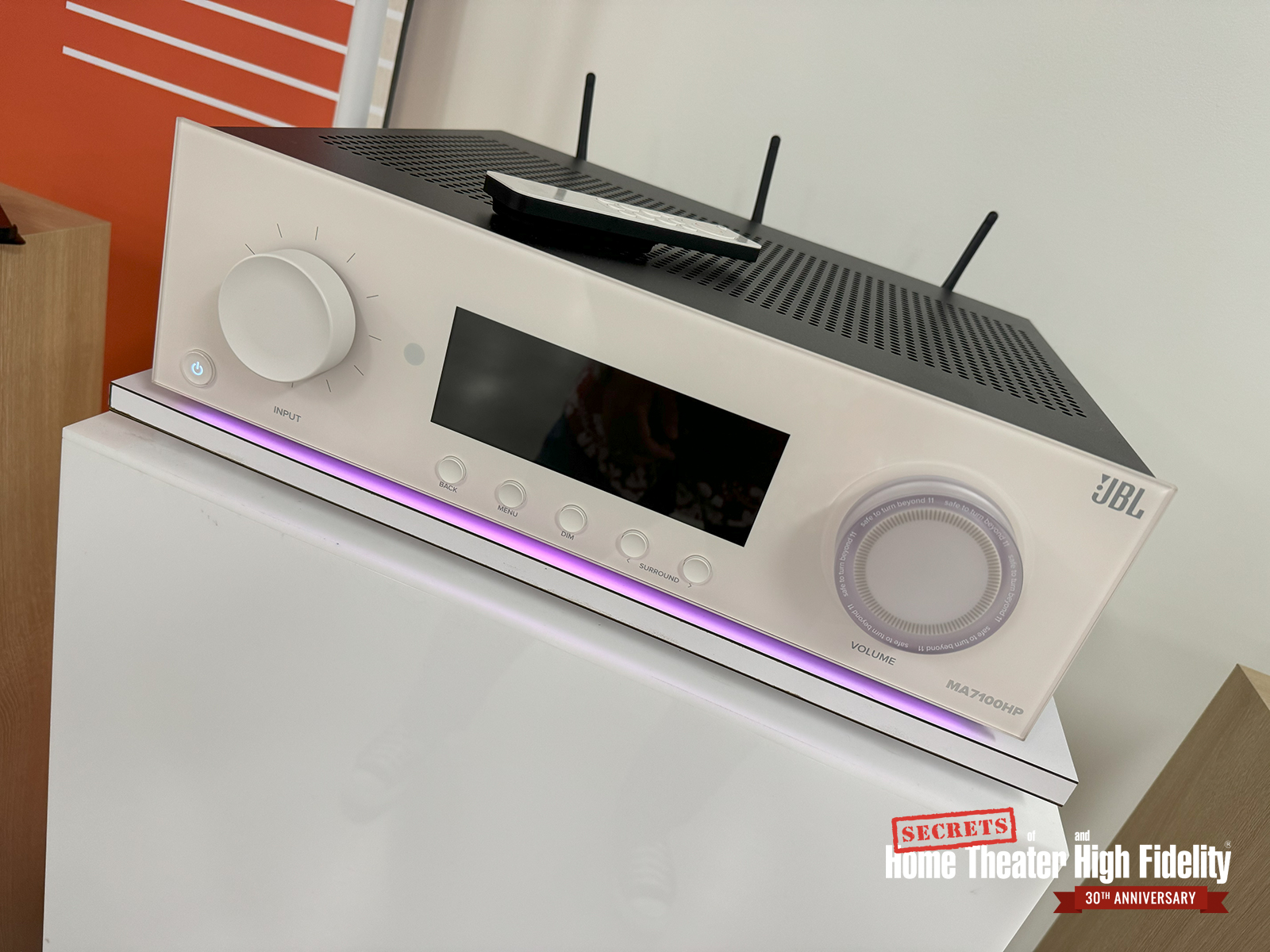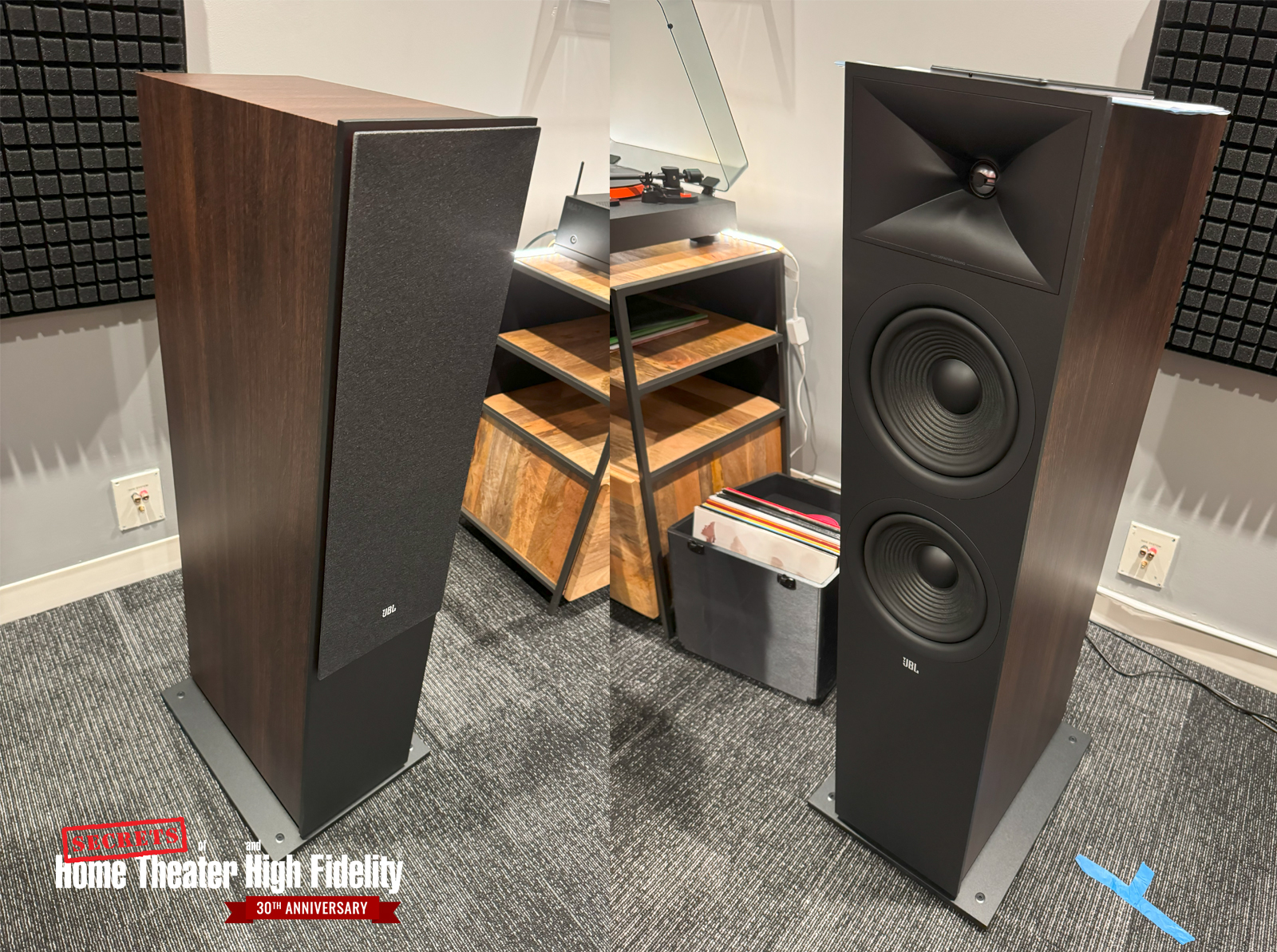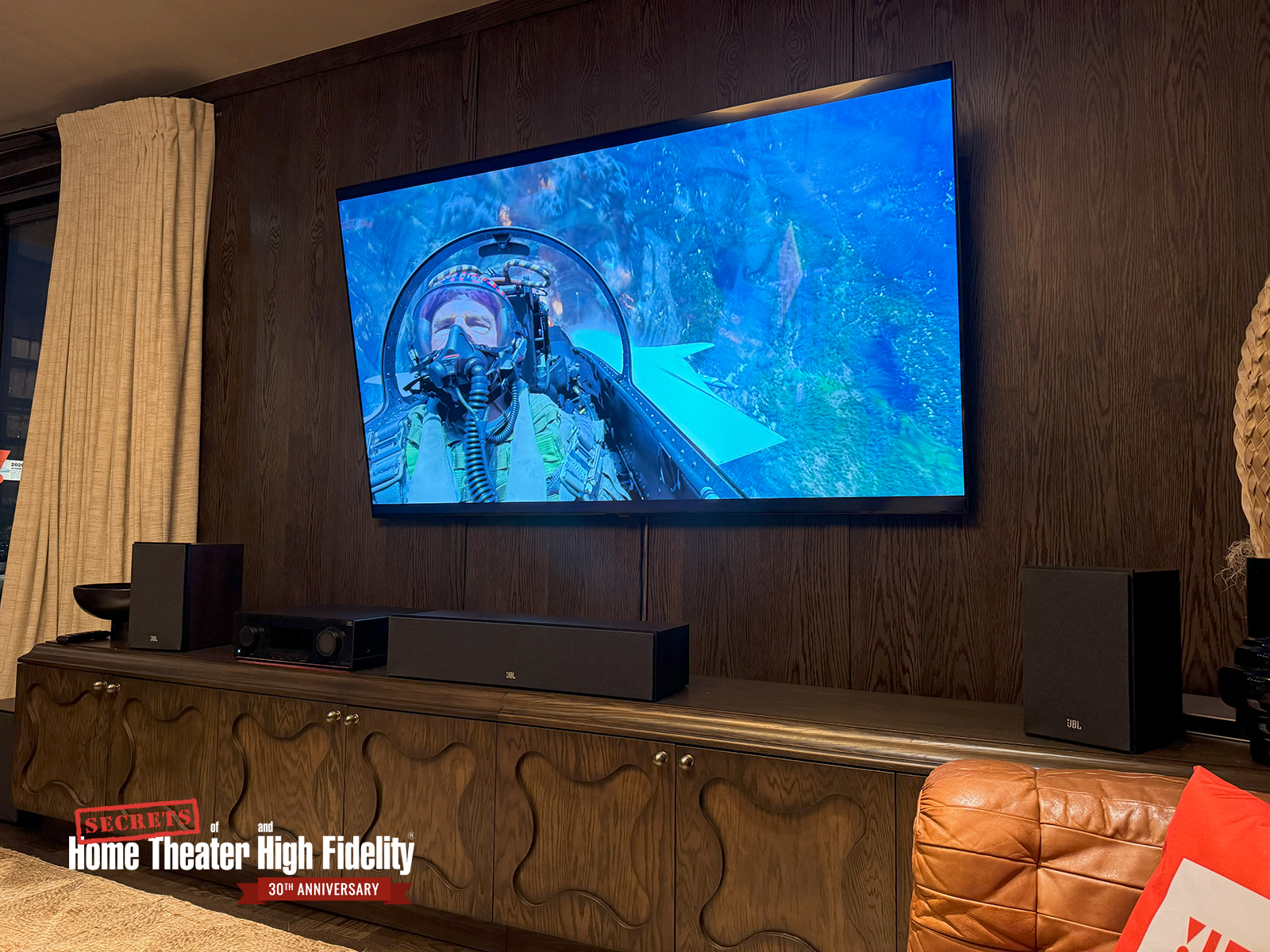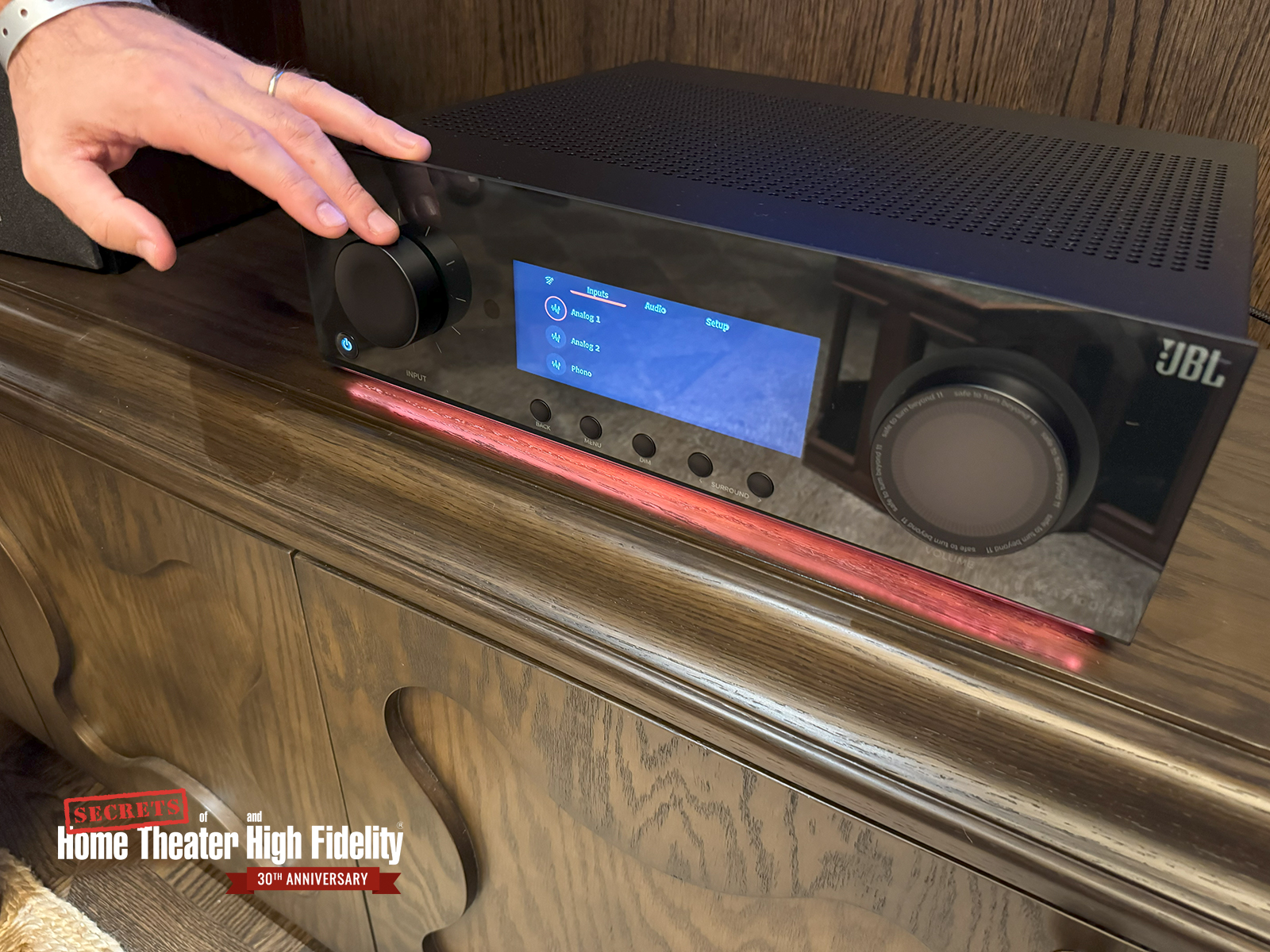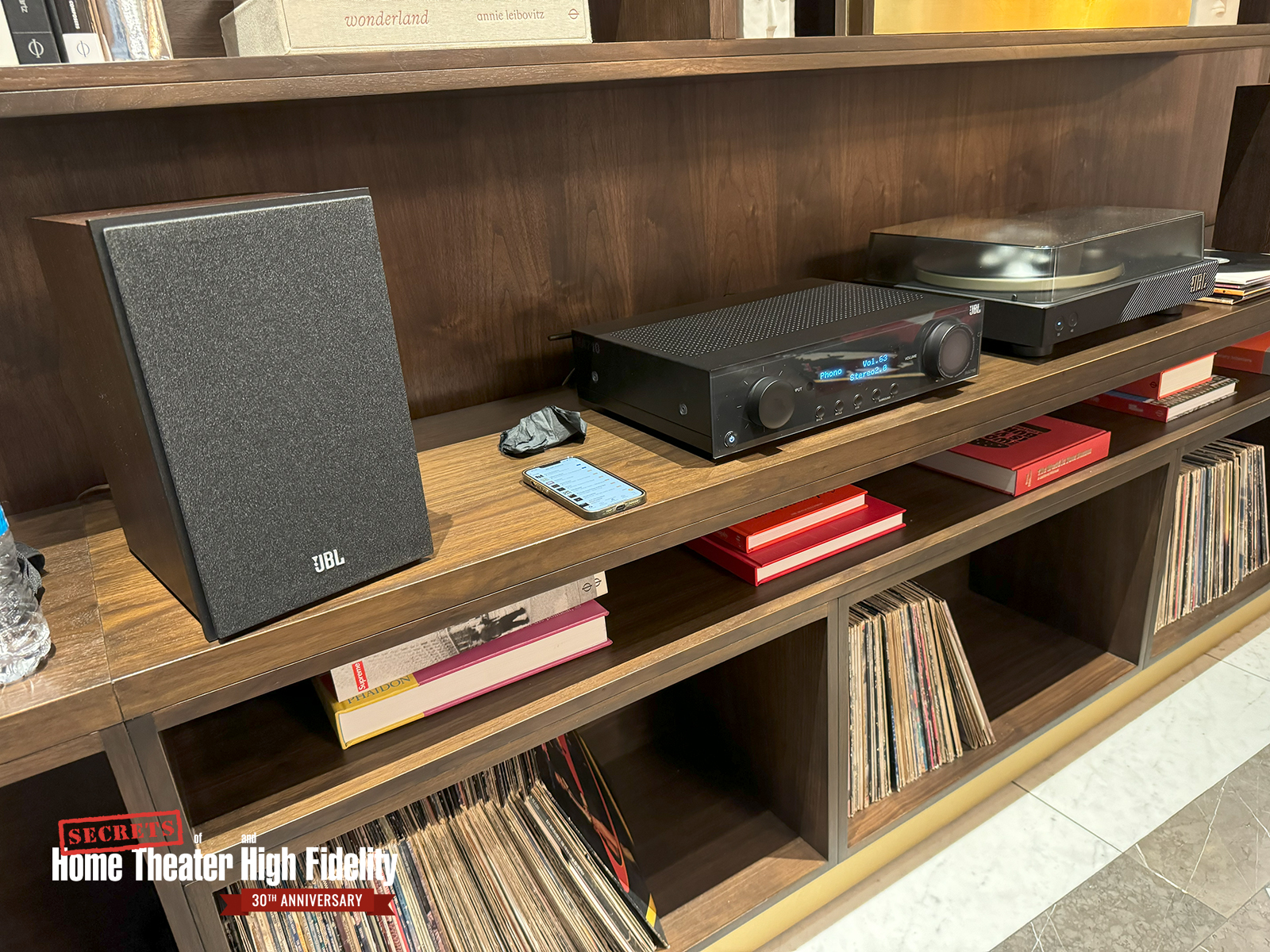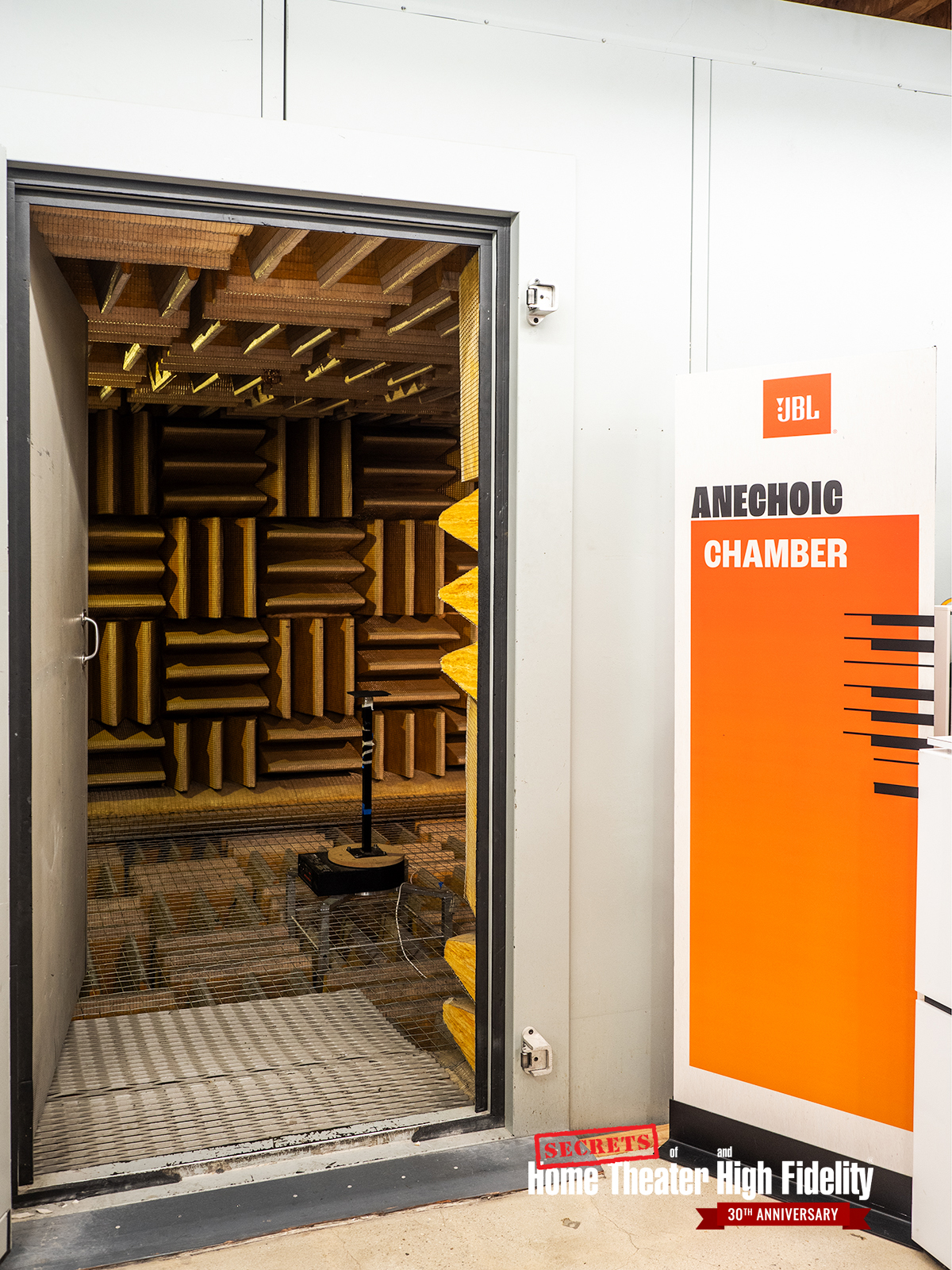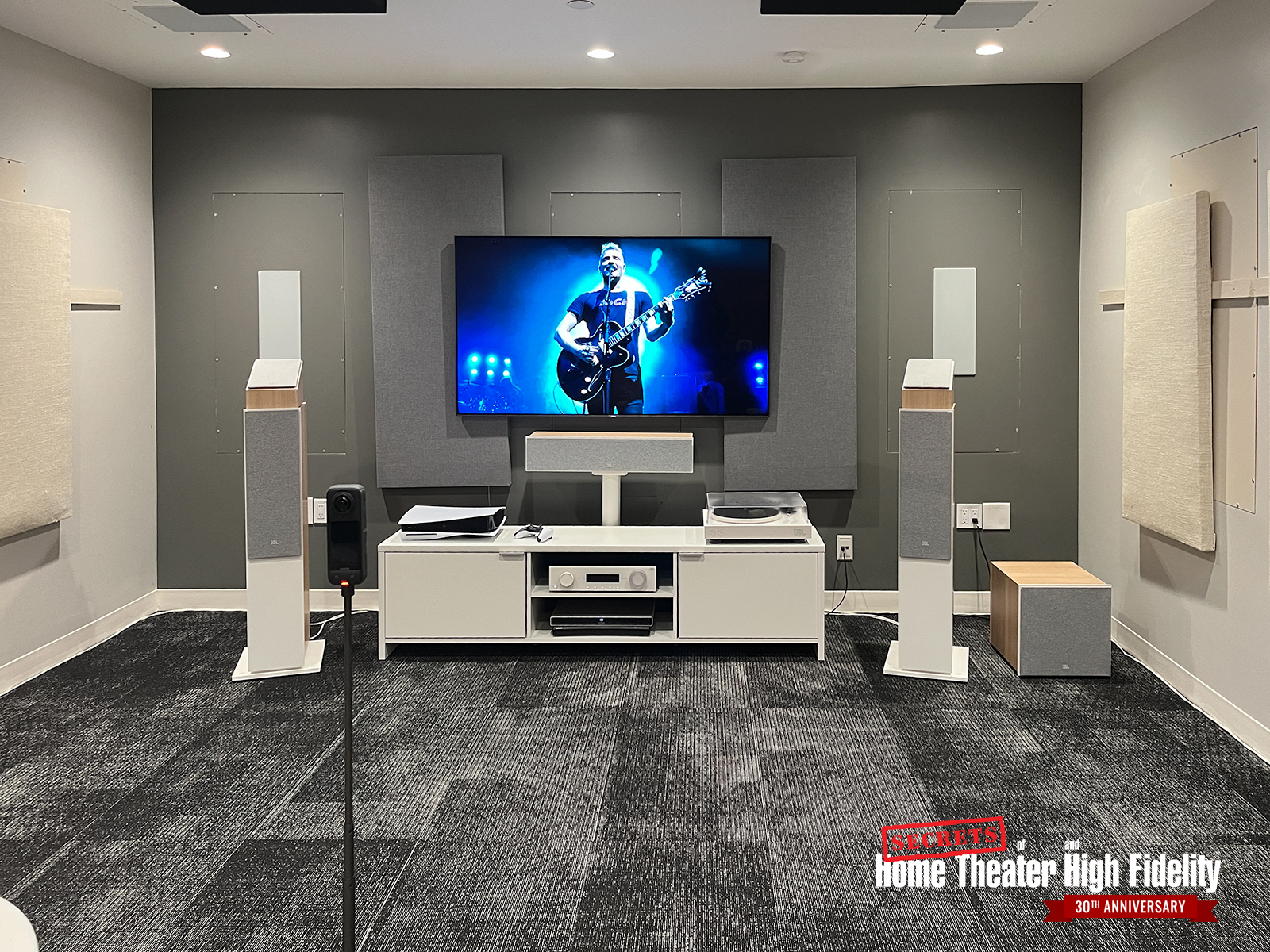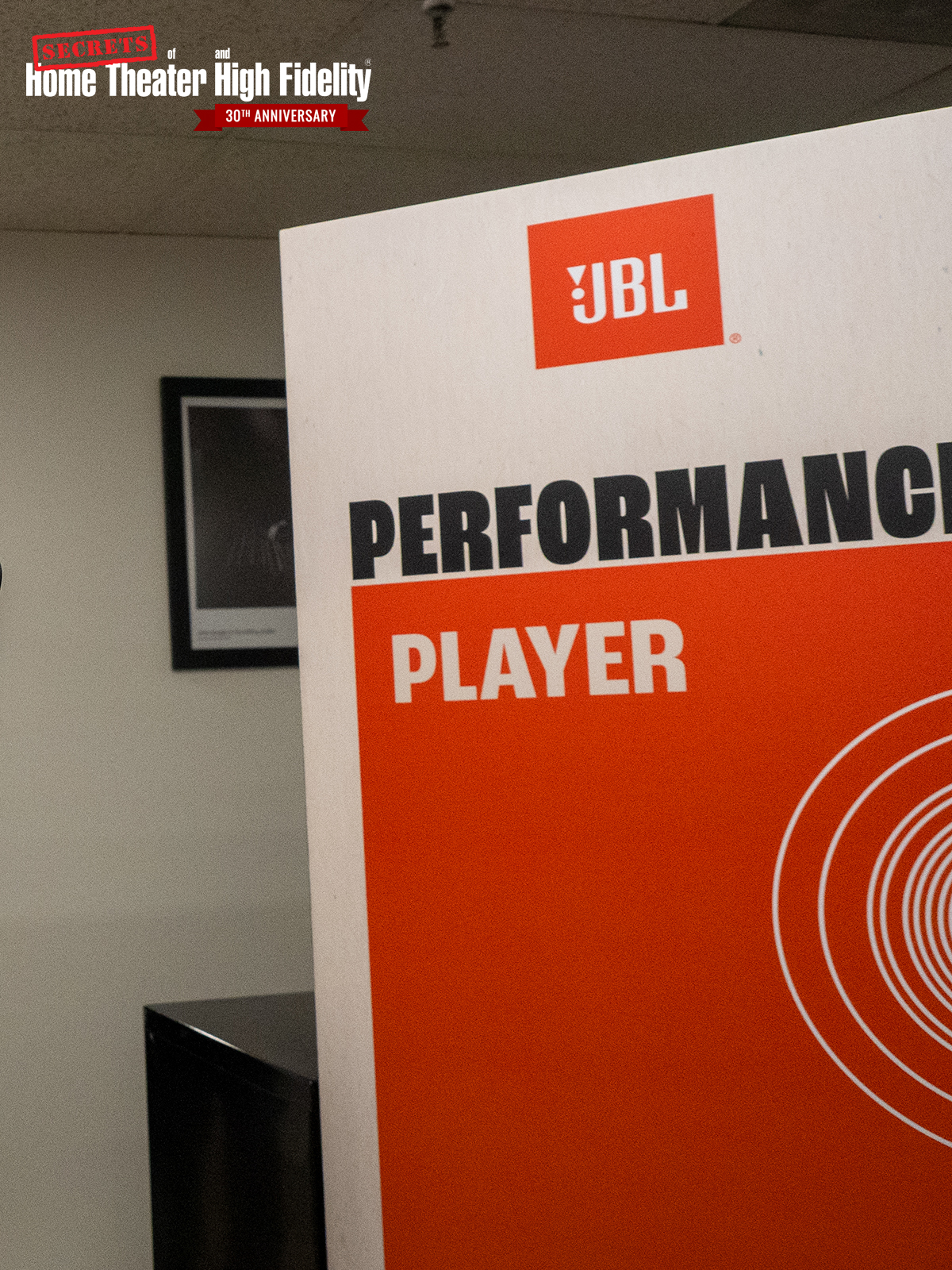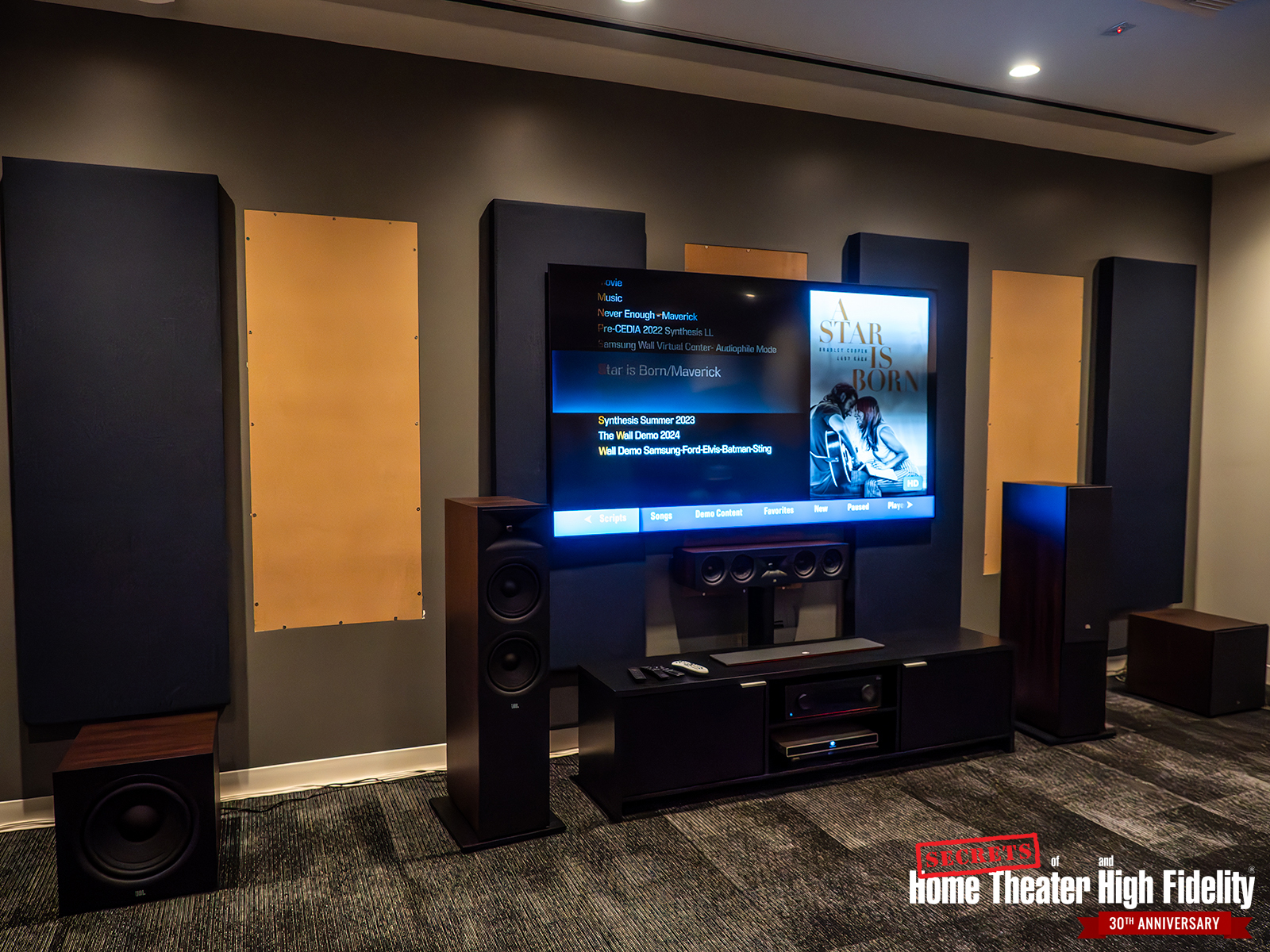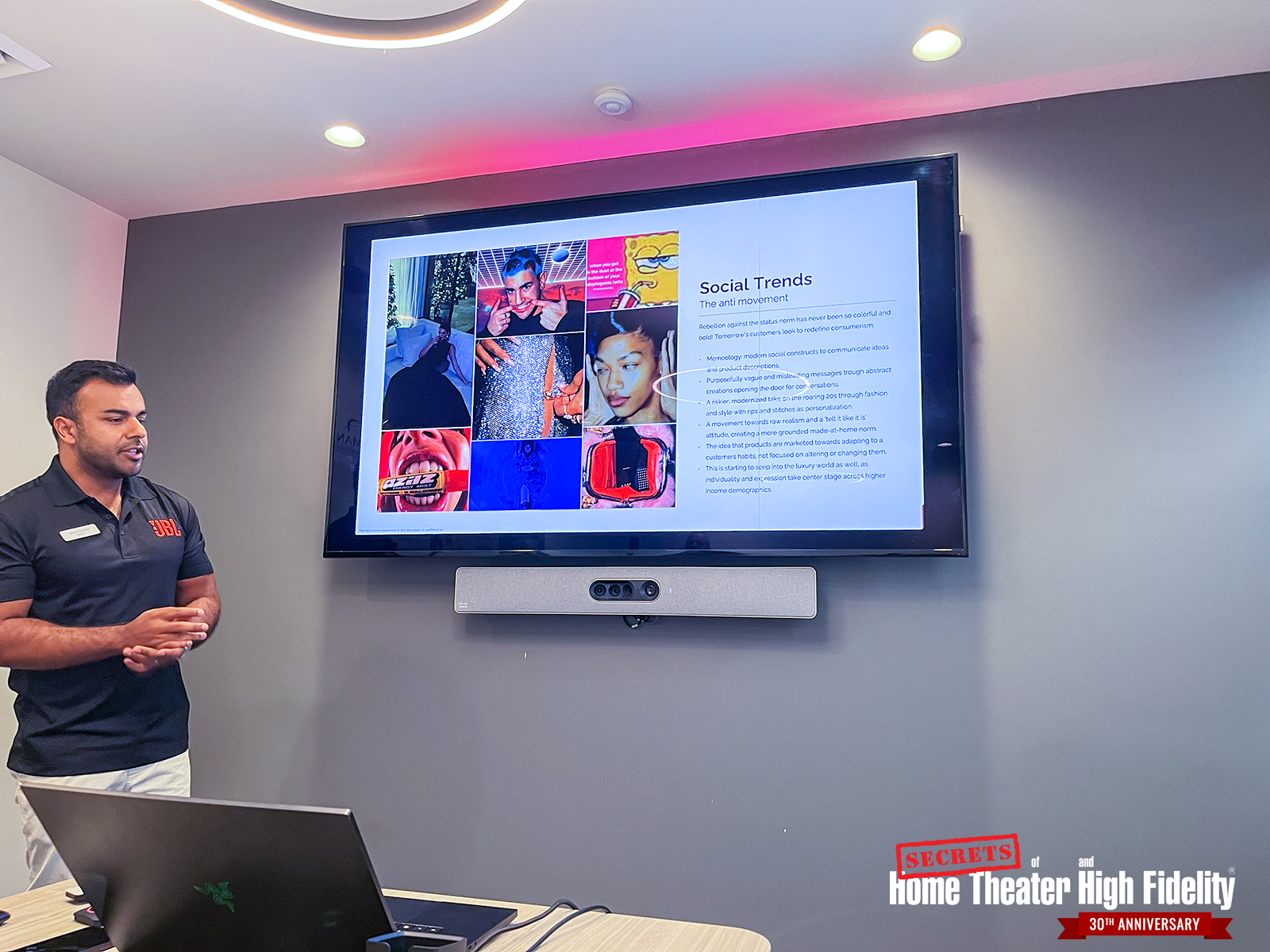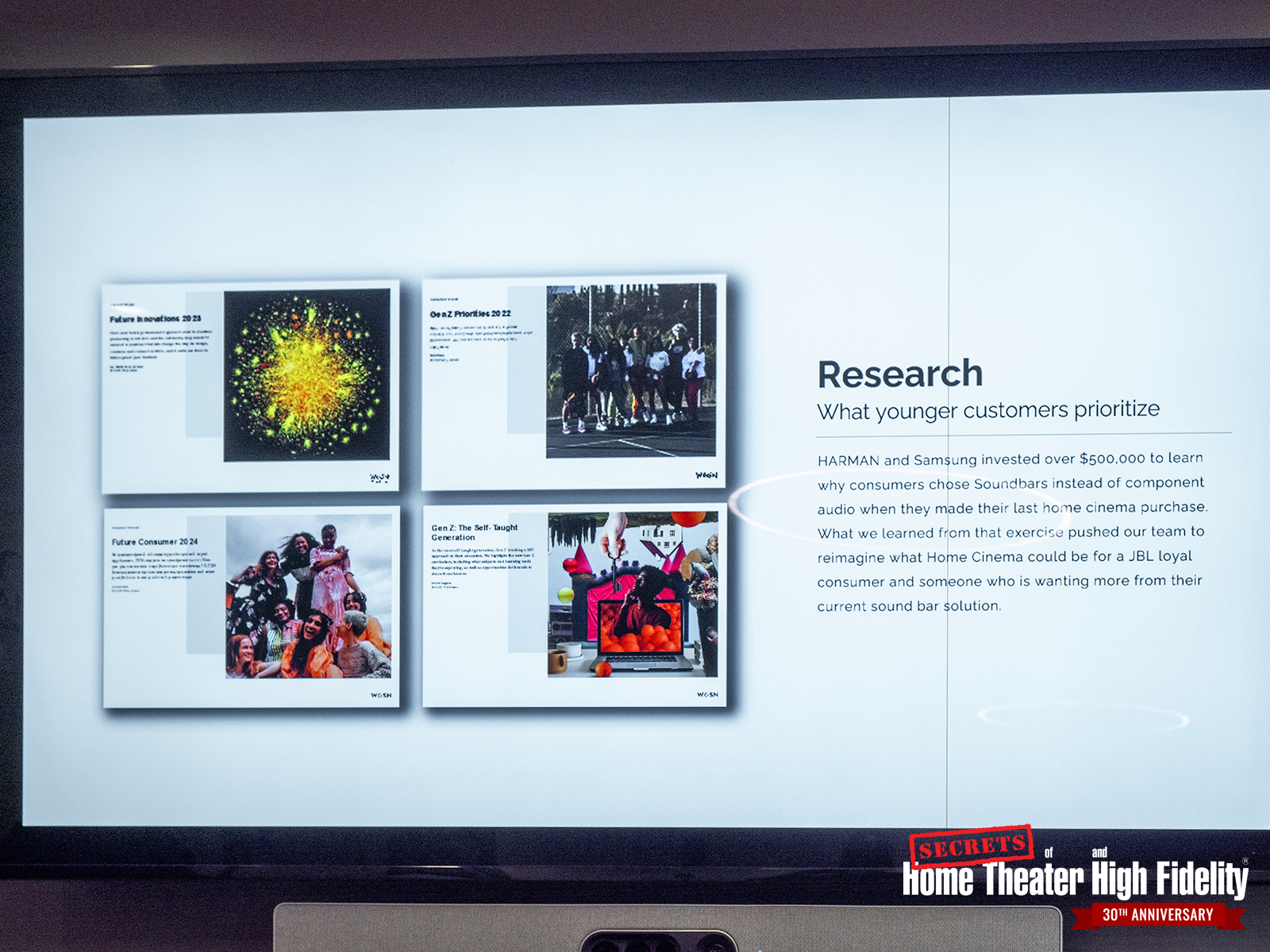Carlo Lo Raso
The fine folks at JBL’s parent company, HARMAN International, invited select members of the US and international press to convene for a two-day product unveiling and informational presentation in Los Angeles. The first evening saw us attend a launch party and product unveiling at the classic Hollywood Roosevelt Hotel. Editor-in-Chief Carlo Lo Raso and reviewer Lory Hawley were present at a posh evening rooftop party that featured a live DJ and beautiful views of the surrounding Hollywood Hills.
Shades of the vintage Hollywood vibe were ever present in this hotel which once hosted the very first Oscars. JBL’s history in movie and music production was mentioned more than a few times at this gathering, along with the factoid that James B. Lansing set up shop in the LA area in 1927, the same year that the hotel opened. After the sun slowly dropped below the hilltops, HARMAN’s David Glaubke and David Tovissi took the stage and introduced the collected guests to the stars of the proverbial show. The cover of a display was pulled to reveal a brand-new line of speakers called the JBL Stage 2 loudspeakers and the JBL MA (Modern Audio) Series receivers. The various models and prices of each line are spelled out as follows:
JBL MA Receivers
- The 60W JBL MA310 5.2-channel 4K AV Receiver.
- The 75W JBL MA510 5.2-channel 8K AV Receiver.
- The 110W JBL MA710 7.2-channel 8K AV Receiver.
- The 125W JBL MA7100HP 7.2-channel 8K High Performance AV Receiver.
- The 140W JBL MA9100HP 9.2-channel 8K High Performance AV Receiver.
Prices range from $399.00 to $1,599.00.
JBL Stage 2 Loudspeakers
- The 260F and 280F Floor-standing models.
- The 240B and 250B Bookshelf models with separate floor stands.
- The 245C Center Channel speaker.
- The 240H Dolby Atmos enabled Height Module.
- The 200P (10”) and 220P (12”) Subwoofers.
Prices range from $299.95 to $1,199.95 per pair for the speakers and $499.95 and $599.95 respectively for the subs.
JBL claims to have undertaken a major study on what the needs and wants of the modern music enthusiast are. A completely different target audience than the legacy JBL audiophiles who are already served by extensive product offerings. The study covered everything from features to ergonomics and usage patterns, to aesthetics. In a nutshell, the overall takeaways were:
- Users wanted an overall simplicity of use. They did not want to be inundated with buttons or complex menus.
- They wanted great sound without a lot of fuss or difficulty in setup.
- The aesthetics were important. The equipment had to look pleasing and decor-friendly with clever touches.
- Value was important.
Regarding the JBL MA electronics, the results clearly show a nod to a simpler European styling. I don’t think it would be unfair to say that I saw some styling cues that could have been inspired by the likes of German company AVM and others. The frosted acrylic faceplates (in either black or white with UV treatment to prevent color fading) look unique.
The large LED display lights up whenever a function is taking place, displaying larger, clearer graphics, and then turns off when not doing anything. Nice little design touches abound like the tongue-in-cheek “Safe to turn to 11” text subtly screened onto the volume knob. A clear reminder that enjoying this audio stuff should be fun. The strip of adjustable accent lighting under the front faceplate of the top two receivers is also a nice bit of eye candy.
Feature-wise, ease of use continues in theme with JBL’s proprietary EZ SET Room EQ software which is accessed via an app and is available on all the MA receivers with DIRAC Live also being an option on the top two models as well. A MM phono stage is available on the three top models along with plenty of HDMI inputs (including ARC), Bluetooth access, and Spotify, Chromecast, and AirPlay compatibility are part of the standard feature set.
The JBL Stage 2 loudspeakers, through my eyes, have a slightly more Danish vibe going on with them. The Stage 2 are apparently voiced with the grilles in place, the assumption being that the target audience prefers the speakers to be with grilles than without. The two colorways “Espresso” (darker wood wrap with black baffles) and “Latte” (lighter wood wrap with white baffles) should be well at home in almost any decor scenario. While the enclosures may seem pretty straightforward, closer inspection reveals they have color trim details that match with accents in the receivers.
The internals of the Stage 2 speakers are a little less straightforward however, having robust bass and midrange drivers with double-stacked magnet structures and an anodized aluminum tweeter set inside a proper computer-optimized waveguide, these Stage 2 speakers look to be more than just pretty faces that dress up a room. With two bookshelf models, two towers, a center channel, two subwoofers, and ATMOS height modules, there are plenty of options for setting up any number of surround sound configurations. It should be noted that the height modules also have a switch in the back that converts them from a height module to a standard speaker so they can be used as on-wall surrounds. Very clever.
Lory Hawley and I got to experience a couple of different JBL MA/Stage 2 setups at this evening’s unveiling. The first was a modest home theater installation based around a JBL MA7100HP AVR, the Stage 2 245C center channel, 250B mains, 240B surrounds, and a 200P subwoofer. Watching movie clips from Top Gun Maverick and A Star is Born were quite convincing and showed great dynamics and a clean, immersive delivery.
The second system was music-based, using an MA 710 receiver, a JBL turntable as a source, and a pair of 250B bookshelf speakers, along with a 200P subwoofer. Switching between music selections from both vinyl (using the MA710 built-in MM phono stage) and streaming, each sounded very good, with the streaming sounding a little more dynamic and clearer which was to be expected. The whole system looked great, and the little 250B bookshelves put out plenty of good clean sound in that larger room space we were in.
As a whole line at first blush, JBL looks to have done its homework, coming out with a concise, good-looking, and easy-to-use array of components and speakers that doesn’t skimp on features and connectivity. Pricing looks to be very competitive in regard to the competition, so the Stage 2 and MA gear look well positioned to be successful if the public ultimately likes what they see and hear. I have a sneaking suspicion that they will.
Tomorrow Lory and I will be getting a deeper dive into what went into designing and developing the Stage 2 and MA equipment over at HARMAN’s main campus in Northridge California. SECRETS contributor Sumit Chawla had previously visited there two years ago for a pre-CEDIA event that covered more aspects of HARMAN’s general development process.
Lory Hawley
The JBL launch atop the historical Hollywood Roosevelt Hotel was undoubtedly an extraordinary event. The sunset views of the LA basin from the 12th floor and the dining, music, and presentations of the new audio systems, which had been set up in rooftop penthouses, were dazzling. However, the real show happened the following day when we arrived at the Los Angeles HARMAN Experience Center in Northridge.
We were greeted by HARMAN’s David Glaubke who outlined the day’s events, including a tour of the Labs and Anechoic chambers, where the design, research, and testing occur. After being given a welcome presentation by Jim Garrett, Senior Director of Product Strategy and Planning for the Luxury Audio Business Unit-Lifestyle Division, we were treated to time inside an Anechoic chamber with Director of Acoustic Engineering An Nguyen who spent time outlining steps in testing new speaker designs.
This was followed by group visits to demo rooms, where we would experience different audio set-ups reflecting 3 researched “customer types”. Each room was labeled by the respective customer: Soundbar Alternative, HiFi Curious, and Performance Player.
We then attended a lecture in the Industrial Design room that was led by New York HARMAN “HUEMAN DESIGN” team member, Jason Gokavi. Jason presented a slide show that detailed the extensive demographic research into Gen Z and Millennial customers; representative age groups of newer audio markets, and ones who Samsung (the parent company of the HARMAN Luxury Audio Group) and HARMAN’s research showed were ready to move up from soundbars and Bluetooth speakers.
The presentation was a fascinating look into our current culture and its evolution not only in terms of audio but seeing some of the issues and details of modern life that drive them. One idea, which was clear in how the MA Receivers were designed, was that simplicity and playfulness are important, as was the use of lights and colors in home décor.
Research showed that these consumers are highly individual and look to personal expression vs following the crowd. Therefore, the faceplate is simple, with a minimum number of buttons, and as Carlo pointed out, the volume dial is marked “safe to turn beyond 11.” A colored light bar can be displayed under the bottom faceplate of the HP models, with a choice of colors (including the trademark JBL orange), or be turned off from the remote. I never thought I would like to have a colored light under an AVR, but I found it was a pretty visual touch in a dark room.
Speaking of the remote, Jason talked again about how simplicity is key to adaptation, and the new remote has a small, simple form factor that is tiny compared to the standard AVR remote. There is also a very complete app called the EZ Set Room EQ that was set up on an iPad that I explored. It makes setting up a new system very simple as fits the almost turnkey intention of this line.
The desire for attention to detail and quality touches were also noted in the research for this demographic, and addressed in the sleek, simple yet detail-rich design in both the aesthetics and functionality of the units. The “Espresso” black glass and “Latte” white frosted Lucite of the MA receiver faceplates showed impressive underlying design elements, that might escape notice but reflect the ideal of no detail being too small. For example, JBL Orange colored trim pieces cover the metal shafts behind the volume and function dials, just to mask the view of any bare metal and provide a harmonious visual accent. The top edge of the faceplate has been carefully beveled after hours of research studying showed how light transmits through the material and how to avoid scattering light.
On the backside of the speaker grills are numerous magnets, so when the grill is placed onto the speaker, it finds its position automatically. The backside of the grill has JBL Orange trim, that when placed on the speaker, outlines the grill in a subtle colored line.
Another small touch was how the floor spike plinths are adjusted on any model of the speakers. There is a hex nut embedded in the top of the speaker base and leveling is adjusted from the top with an Allen wrench. No more tipping over speakers to adjust levels!
After the group tours and demos, we broke for lunch, heading next door to the Harman Experience Center with most of the group ending the day with final questions and answers.
However, I was one of three writers invited to stay on for the rest of the afternoon, which was a real treat for me. Since the market JBL is reaching out to includes women, I think JBL wanted to make sure I particularly got a closer look and listened to the systems, so I had all the one-on-one time I could want with the very engineers who designed the MA and Stage 2 product line.
The three of us were split up; each starting with a separate demo room and rotating each hour so that by the end of the day we had personal time with each system. I was set up with several choices of music sources, including my iPhone, and instructed to play a wide variety of music.
Ahhhhh! Sitting in a quiet room on a comfy couch, after a rather hectic day reminded me why I was there. Music. I was impressed. I had time to not only play music but explore every feature, push every button, and, most delightfully for me, spend time with the engineers who would come in and answer any questions I might have.
For my speaker design questions, I spent time with very patient Mike Strange (Senior Global Product Line Manager) and Chris Hagen (Senior Principal Engineer) and the MA AVR system with Kevin Kent (Senior Global Product Line Manager). All three were superb teachers and no question was too small or basic. Mike and Chris explained how they were able to make the speakers more affordable by making them “2.5-way”, rather than 3-way speakers by using two woofers and a tweeter and using low pass and high pass filters for the upper woofer to operate as a mid-range speaker as well. This was to help provide the speakers with some serious bass, which they would have lost by using a true mid-range driver. Mike was such a good teacher that when he realized I’d probably never seen a crossover he came back to the room with both the crossover board and the woofer for me to hold and explore.
The wonderful thing is that these men were sincere, enthusiastic, and welcoming. I forgot I was on an assignment and felt like I was getting to hang out with the engineers my father always had over to the house when I was a kid. Kevin Kent was involved with the MA AVR design, and it was a treat to learn about what goes into thinking about how a button should feel, and how many is the right amount. And again, those lovely color details and crisp beveled edges and choice of faceplate glass and Lucite. And then learning about the choice of Class D amplification for the system, and how far Class D had come and now was going to be seen in more future development.
The day ended much too soon. These were impressive systems, and it was a treat to learn about what goes into the creation of a new music system for a company. Knowing the HARMAN Center is the home of the HARMAN Target Curve and the research center for some of the top headphones and speakers in the music industry, I hope I can return someday to continue my education at such a prestigious center.










